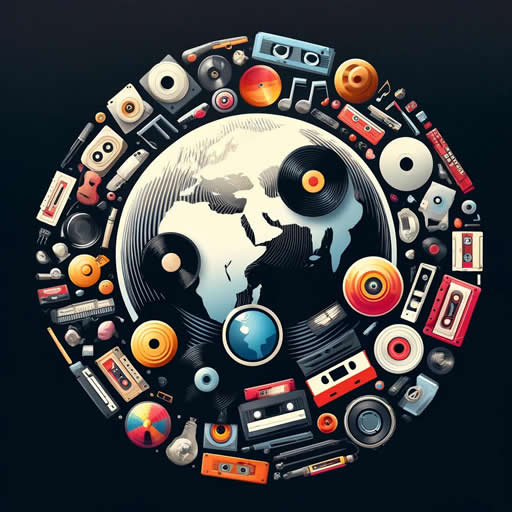A Guide to Music Poster Terminology for Collectors
Music posters are more than promotional tools; they are windows into the history and culture of music. For collectors, these pieces of art hold immense value, both sentimental and monetary. However, navigating the world of music poster collecting can be daunting, especially if you’re unfamiliar with the terminology. This guide breaks down the essential terms and concepts to help collectors of all levels build their knowledge and confidence.
What Are Music Posters?
At their core, music posters are visual representations created to promote artists, bands, concerts, or music-related events. They serve multiple purposes, from advertising a specific gig to acting as a collectible keepsake for fans. These posters often showcase unique designs, making them a blend of marketing and artistry. For collectors, understanding the various types of music posters is the first step in identifying valuable pieces.
Key Terms in Music Poster Collecting
Gig Posters
Gig posters are created to promote individual concerts or small shows, often tied to a specific date and venue. These posters typically feature custom artwork, sometimes designed by renowned artists, making them highly desirable for collectors. Since they are often printed in limited quantities, gig posters are a cornerstone of many collections.
Collector’s Tip: Look for gig posters with distinct designs tied to a memorable event. Their rarity and direct connection to a particular performance can significantly increase their value.
Concert Posters
The term “concert posters” is often used interchangeably with gig posters, but it can also refer to more generalized promotional materials for concerts. These posters might not always highlight a specific date or venue, making them more versatile but less exclusive.
Example: A concert poster for a summer tour featuring multiple bands without listing individual dates.
Band Posters
Band posters focus on promoting the band or artist rather than a specific event. They often feature promotional imagery, logos, or iconic photos of the artists. While not tied to a particular concert, band posters hold appeal for fans and collectors due to their visual representation of an artist’s brand.
Collector’s Tip: Look for band posters that coincide with major milestones, such as album releases or anniversaries.
Tour Posters
Tour posters are designed to promote an artist’s or band’s entire tour and often include a list of cities and dates. These posters typically feature overarching branding for the tour, including themes or artwork tied to the event.
Value Factor: Limited-edition tour posters with specific city highlights or artist signatures can fetch higher prices.
Promotional Posters
Promotional posters are created to market album releases, singles, or other milestones. Often distributed to record stores or radio stations, these posters are typically not available to the public, making them rarer and more valuable.
Example: A promotional poster for The Beatles’ “Sgt. Pepper’s Lonely Hearts Club Band” album release.
Vintage vs. Modern Posters
Vintage Posters
Vintage music posters are usually defined by their age, design techniques, and historical significance. These posters, often hand-drawn or screen-printed, were produced in limited quantities and may show wear and tear that adds to their charm.
Example: Psychedelic rock posters from the 1960s featuring artists like The Grateful Dead or Jimi Hendrix.
Modern Posters
Modern posters benefit from advanced printing technology, allowing for mass production and vibrant designs. While they may lack the scarcity of vintage posters, some modern pieces created in limited runs or by celebrated artists can still hold significant value.
Collector’s Insight: Modern posters tied to festivals like Coachella or Glastonbury often feature high-quality artwork and limited-edition runs.
Understanding Poster Printing Techniques
Screen Printing
Screen printing is a manual technique where layers of ink are applied to create a textured, vibrant image. This method was commonly used in vintage posters and is still employed for high-quality limited-edition prints today.
Why It Matters: Screen-printed posters are highly valued for their craftsmanship and durability.
Digital Printing
Digital printing, the standard for modern posters, allows for quick and inexpensive production. While efficient, it lacks the tactile quality of screen printing, which may impact its value to collectors.
Collector’s Tip: Look for limited-edition digital prints signed by artists to increase their appeal.
Factors That Affect Poster Value
Rarity:
- Posters created for one-time events or printed in small batches are often more valuable.
Condition:
- Mint-condition posters with no tears, stains, or fading fetch higher prices.
- Minor imperfections can add character but may decrease value depending on the collector’s preferences.
Artist Collaboration:
- Posters designed by renowned artists or featuring unique collaborations can significantly enhance their worth.
- Example: Shepard Fairey’s designs for bands like The Black Keys.
Historical Significance:
- Posters tied to landmark events, such as Woodstock or Live Aid, carry historical value that resonates with both collectors and music enthusiasts.
How to Use Terminology in Collecting
Understanding and using music poster terminology allows collectors to:
- Identify Authentic Pieces: Terms like “gig poster” or “tour poster” help clarify the context and origin of a piece.
- Evaluate Value: Knowing the difference between vintage and modern posters, or screen-printed versus digital, aids in appraising items accurately.
- Negotiate Effectively: When buying or selling, using precise terms demonstrates expertise and fosters trust.
Conclusion
Music posters are more than just decorative items—they are tangible pieces of music history. By familiarizing yourself with the terminology, you can better appreciate the artistry and significance of these collectibles. Whether you’re a seasoned collector or just starting, understanding the language of music posters will enhance your ability to find, value, and enjoy these unique pieces of memorabilia.
